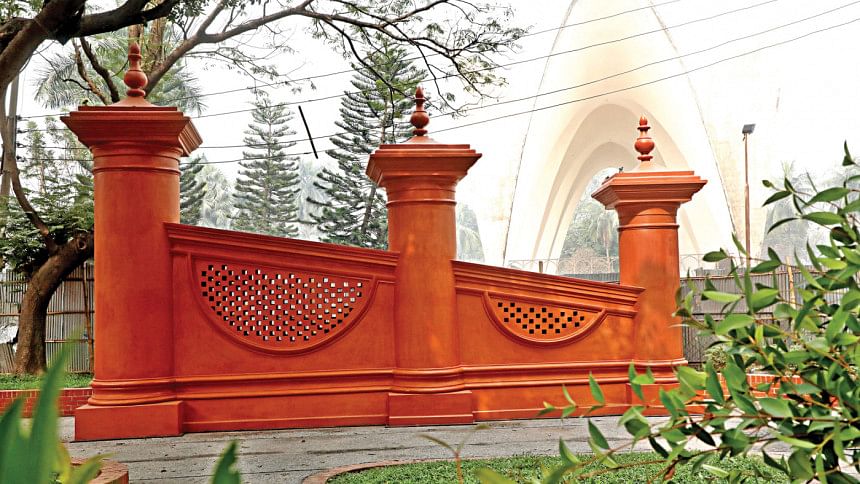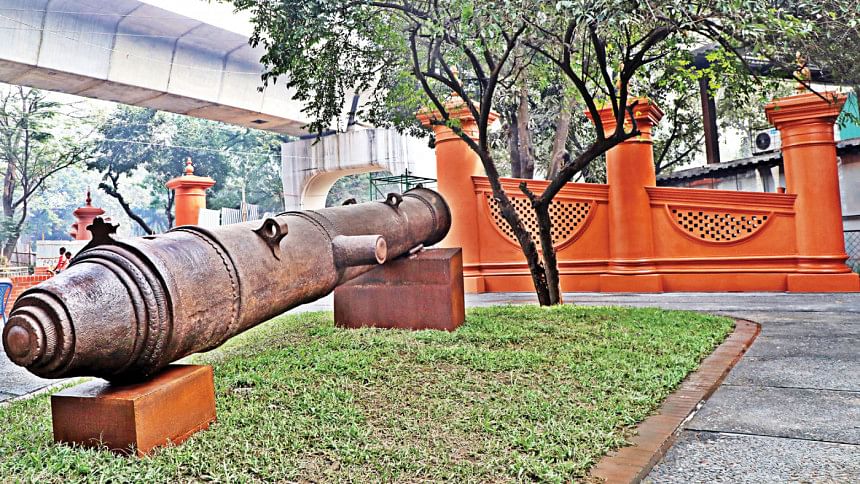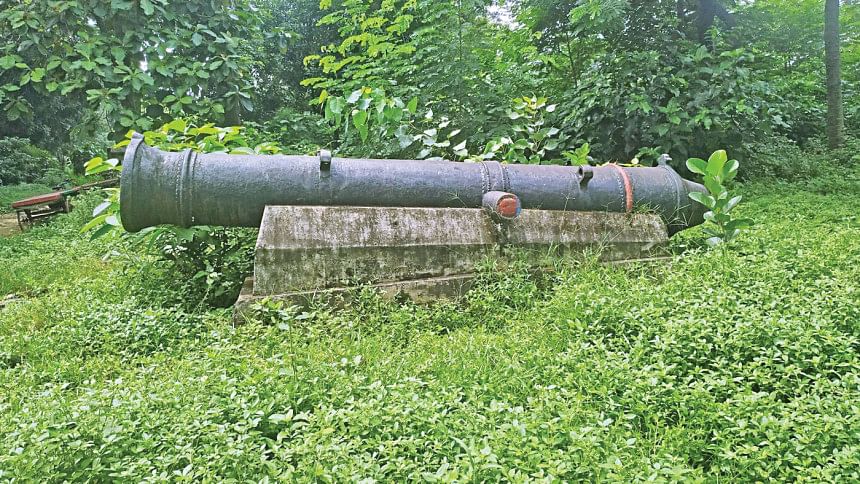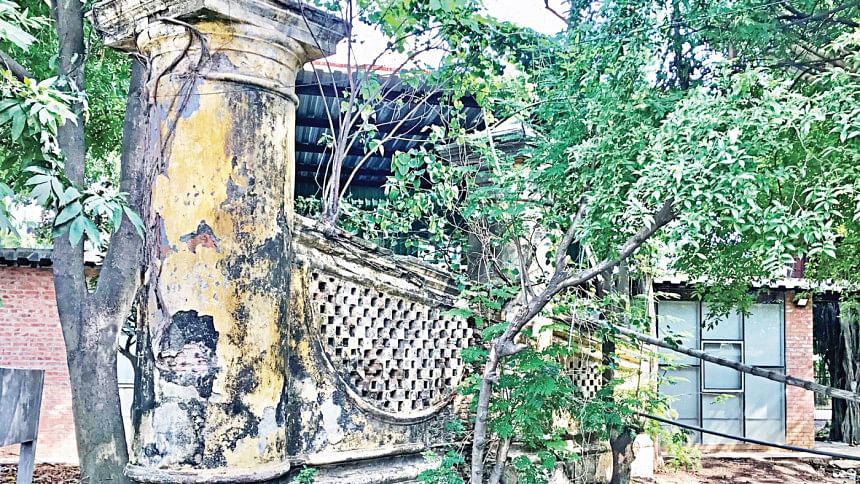Dhaka Gate the city’s new splendour

I have crossed the Dhaka University campus and its adjoining areas like Shishu Academy, the Centre for Renewable Energy Research, and the mausoleum of three leaders so many times but never for once noticed the architectural splendour standing hidden somewhere there -- the Dhaka Gate.
Now that this gate has been renovated and given back its former glory, I registered its presence for the first time even though it has been standing there quietly as a testament to the long history of our beloved Dhaka.
In 2023, Dhaka South City Corporation took the initiative to restore the historical Dhaka Gate. It commissioned a project aiming to restore the original structure and create a new public plaza under the supervision of a conservation specialist and direction by a prominent historian.
This structure of great architectural importance is not Islamic, Hindu or colonial, rather it is a mix of three styles. Indo-Gothic, Mughal-Gothic, Neo-Mughal or Indo-Islamic style is what makes the Indo-Saracenic architecture.
"The jalli or perforated screen is traditionally Bengal design, for the air to pass. The pillars are from colonial reference and the dome in amla-kalasa or pitcher design is from the Islamic era," says Dr Abu Sayeed M Ahmed, the project's conservation specialist.

He is also a professor and dean of the Faculty of Environmental Science and Design, University of Asia Pacific.
"We tried to restore the gate using all local building materials and the traditional way of construction. We used lime or chun, betel nut juice or kosh or juice, treacle or chita gur and mixed it with powdered brick or shurki to make the plaster in ancient construction style. This wards off bugs. The floor material of the place is Modhopara granite. We kept the trees and did the landscape around it," Ahmed says.
"We wanted a public space for people to rest and enjoy the evening. As part of the beautification, we brought the cannon, Bibi Mariam, which was originally used in Mir Jumla's Assam war. This historical artefact did many rounds around the city from being at Sadarghat, and Osmani Udyan. After going through the metal conservation process and restoring it to its original colour, it is now in its current place.

"To clarify one point, I must say that the cannon has no relation to the gate. The two have separate historical prominence," he explains.
The Dhaka gate has its share of historical confusion. Some say as part of hearsay that Mir Jumla, Mughal Subahdar of Bengal during 1660-1663 constructed this gate to mark the Mughal Northern territory of Dhaka and thus it was believed to be called Mir Jumla Gate. However, there is no historical evidence to the claim as explained by historian Muntassir Mamoon.
"But the story also goes towards the decline of the Mughal era and the start of the East India Company's reign. The entire area where the gate stands, adjoining Suhrawardy Udyan formerly known as Ramna Race Course ground was known as Bagh-e-Badshahi. The royal garden was mostly covered in Jungle.
"In 1825, Charles Dawes, who served as the magistrate of Dhaka, cleared the area and constructed a road from here to Shahbagh, erecting a gate at the road's entrance; and it was called Ramna Gate," Mamoon explains.
During the late colonial period, the gate endured severe damage, losing the smaller two turrets at both ends and all the finials above the turrets.
Later Muhammad Azam Khan (1960-62), the then governor of East Pakistan, broke down its eastern wing and placed it near the Shishu Academy to widen the road during the Martial Law reign. By this time, it was called Dhaka Gate.
Today, the ochre gate, one of Dhaka's most important monuments, stands in all its old grandeur near Doyel Chattar.
The restoration work is part of DSCC's efforts to promote culture and heritage preservation in the city.


 For all latest news, follow The Daily Star's Google News channel.
For all latest news, follow The Daily Star's Google News channel. 



Comments